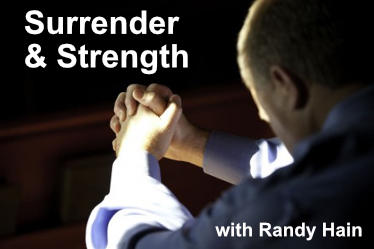In Caesarea Philippi, Jesus asked who people said he was, and his two polls showed that only one person said he believed Jesus was who he truly was, the Messiah and Son of God (Mt 16:13-20).
This article originally appeared in The Anchor, the weekly newspaper of the Diocese of Fall River, Mass, on August 23, 2019 and appears here with the kind permission of the author.
Recently the Pew Research Center asked U.S. Catholics who or what they understood the Eucharist to be. The response, like in Caesarea, was sobering.
Only fifty percent of U.S. Catholics said that they knew the Church’s teaching that after the consecration, the bread and wine are totally changed into Jesus’ body and blood; 45 percent said that the Church teaches that the “bread” and “wine” are only symbols, and five percent didn’t know what the Church teaches.
Even among the fifty percent of those who were aware of the Church’s teaching, a third said that they still regarded the Eucharist as a symbol, leaving a total of only thirty-one percent who actually believed the Church’s teaching. Sixty-nine percent of Catholics said that they believe that the Eucharist was just a symbol — that Jesus is not on the altar after the consecration, or in the tabernacle, or in us after Holy Communion.
Rather than news, the report was a confirmation of what had long been known and inferred: there is a grave crisis in Eucharistic faith. That crisis is ultimately at the root of many others: low Mass attendance, shuttered parishes, closed schools, insufficient priestly vocations, waning Catholic influence in society, growing secularism, and, as Pope-emeritus Benedict incisively wrote in April, even the clerical sexual abuse of minors.
That’s why the results have justly been occupying the attention of bishops, priests, commentators, and all those who care about the Church and the Lord.
Many have focused on the need for much better catechesis across the board. That’s absolutely true, but inadequate and shortsighted. Christianity is not a classroom trying to help people pass a standardized test, but a way of life. Even if the results came back and 100 percent of surveyed Catholics identified the Church’s teaching with precision and affirmed faith in it, the larger question would remain: are they living Eucharistic lives, with Jesus in the Eucharist as the source, summit, root and center of their existence?
Knowing and believing are indispensable steps, but the goal is Eucharistic living. This is something that goes far beyond mere Sunday Mass attendance. It’s whether we live in holy communion with the Risen Lord incarnate in the Eucharist, whether we draw our life from him, whether we permit Him from within to make our life a commentary on the words of consecration.
Knowing how we got here is key to knowing how to respond adequately.
After the Second Vatican Council, there were many ideas and practices that undermined knowledge and faith in the Real Presence. Some priests, religious and theologians advanced a desacralizing ideology that, falsely claiming to be the “Spirit of Vatican II,” attacked Eucharistic piety, destroyed high altars and altar rails, banished tabernacles to side altars or chapels, and basically sought to effect a Copernican shift in Eucharistic focus away from worshipping God and onto idolatry of the community. Many of these iconoclasts taught in seminaries and Catholic universities, where, with impunity, they diabolically derided Eucharistic adoration as the superstitious “worship of a breadbox” and persecuted seminarians who wanted to make holy hours or have exposition. This sadly wasn’t isolated. And it certainly impacted those future priests who didn’t know the faith well enough to recognize the voice of false prophets.
But that’s not the principal explanation. The bigger one is a series of practices with regard to the Eucharist that, regardless of the intentions in inaugurating them, impacted what the faithful know and believe. The ancient aphorism lex orandi, lex credendi reminds us that how we pray impacts what we believe. The way we have spoken about the Eucharist in word and body language, in music and architecture, over the last half century has unquestionably impacted what people understand and believe.
The location and beauty of the tabernacle, the posture with which we receive Holy Communion, the pace at which Holy Communion is distributed, the direction of our worship, the liturgical vocabulary we use, the widespread encouragement and allowance of almost everyone to receive, the accessibility of Churches for prayer, the frequency of Eucharistic adoration, and the Eucharistic piety of the priests and others who lead the Church’s prayer all matter.
How do we increase knowledge and faith of the reality of Jesus in the Eucharist? It begins with taking seriously what the Church believes and courageously living it, so that others might come to believe. Faith is not just taught but caught, and everything the Church does ought to help people catch it.
I’d like to mention ten practices for consideration. I hope in doing so that we can get beyond the “liturgical wars,” beyond even our preferences, to concentrate on what is truly conducive to communicating clearly and effectively the Church’s Eucharistic faith.
First, priestly Eucharistic piety. Priests have the greatest role and responsibility for turning the situation right-side-up. There’s a difference between priests who live truly Eucharist lives and those who don’t. It’s manifested in the way they pray rather than recite the Mass, handle the Eucharist in their hands and distribute, put reverence into genuflections, celebrate Mass on their days off, pray before the Blessed Sacrament, promote Eucharistic adoration and take the inconvenient hours, refer in their preaching to Jesus in the Eucharist, and sit in the confessional so that people can be worthy to receive him. Eucharistic priests form Eucharistic parishes, and Eucharistic parishes not only survive but thrive and renew the Church.
Second, tabernacles in the center of our sanctuaries. If we know the Eucharist is truly the King of Kings, why would we put him anywhere else than in the most important place? Moreover, wouldn’t our tabernacles be the most exquisite item in the whole Church, to convey this truth and love?
Third, prayer before the Eucharistic Jesus. If we believe that in the Eucharist, Jesus fulfills his promise to be with us always until the end of time (Mt 28:20), and we recognize that people need Jesus, then we must provide access to him. Locked Churches, however common, are a scandal. They’re shut, of course, out of safety, lest the Church suffer vandalism, but the remedy is vigorously promoting prayer and adoration with a sense of shared responsibility. Eucharistic adoration may be itself the most important element in the turnaround, for no one worships bread.
Fourth, daily Mass. If the Eucharist is really Jesus, then is there anything more important we can do on Mondays, or Thursdays, or any day than receive him? Daily Mass changes a believer from someone who fulfills a Sunday duty to someone who treats the Eucharistic Lord with generous love.
Fifth, not rushing Holy Communion. Catholics believe receiving Jesus Christ is the most incredible moment in human life. Why would we ever hurry it? In many parishes, extraordinary ministers of Holy Communion have become quasi-ordinary, contrary to Church norms, lest the distribution of Holy Communion, and therefore, Mass, “take too long.” But emphasizing “efficiency” or a desire for liturgical “inclusivity” over this encounter between God and his beloved is unwise and counterproductive.
Sixth, receiving with greater reverence. It is certainly possible for people to receive the Lord devoutly in their hands while standing. We shouldn’t forget, however, that when Cranmer, with Machiavellian discernment, was seeking to destroy Eucharistic piety in post-Reformation England, he did it principally through promoting communion in the hands while standing. If men drop to their knees to propose to beloved future brides, can’t we kneel out of love to receive the Lord? Doesn’t Holy Communion on the tongue far better communicate the sense of receiving the Eucharist as a gift? Since we seldom kneel except for God, and almost never allow others to put things into our mouths, such a gesture would communicate the uniqueness of what we’re doing.
Seventh, orienting our worship more conspicuously toward God. A priest who devoutly prays the Mass can convey the theocentrism of the Church’s liturgy no matter what direction he is facing. But the potential for priests to become the center of attention, and for faithful to think that the Church’s worship is self-referential, is much greater when priests face the people. One of the reasons why many young Catholics are gravitating toward the traditional Latin Mass, I’m convinced, is because they believe ad orientem worship more easily and effectively communicates a sense of the sacred, and facilitates prayerfully preparing for the most sacred moment in human life. Especially in those circumstances when priests are not the most graceful celebrants, orienting the new order of the Mass more exclusively and explicitly toward the real presence of the God-man would help ameliorate the crisis.
Eighth, living the Church’s teaching about worthy reception. We do not transmit faith in the Real Presence when we permit anyone and everyone, regardless of their conditions, to receive the Eucharist. This concerns not just those who obstinately persist in manifest grave sin, like Catholic politicians with scandalous public or private lives, but also Catholics who have committed serious sins yet to be absolved and non-Catholics who are not yet in communion. People notice whether we take the holiness of Jesus in the Eucharist seriously or treat the Eucharist like a piece of cake at a birthday party. Our example instructs.
Ninth, terminology. Our vocabulary must communicate our faith. We should boldly use the terms “sacred Body” and “precious Blood.” Mention of “bread” and “wine” at all — even “Eucharistic bread” or “consecrated wine” — confuses the faithful and doesn’t communicate the truth. This is particularly important for catechists and liturgical ministers. We also need to be particularly careful about what is taught through liturgical music. “Look beyond the bread you eat” is heretical. Singing a catchy mantra, “Eat this bread, drink this cup,” teaches something far different than “Eat my flesh, drink my blood.”
Tenth, pulling out all the stops. If we really believe the Eucharist is Jesus, and we love him, then it should show, lavishly. St. Thomas Aquinas wrote in one of his Eucharistic hymns, “quantum potes, tantum aude,” “Dare to do all you can.” The more we do — with Corpus Christi processions, 40 hour devotions, starting perpetual adoration, Eucharistic conventions, Eucharistic healing services and more — the more we will convey our Eucharistic faith.
As I make these suggestions, I’d like to emphasize that not only is none of them “against Vatican II,” or against the authentic liturgical reforms of the last fifty years, but each is meant to bring about the central liturgical aim of the Council: the “full and active participation by all the people,” and not just in the liturgy but in what the liturgy is meant to accomplish: bring us into communion with Christ by the power of the Holy Spirit.
I’d also like to underline that none of the ideas is new or original. In fact, many are already being implemented in various parishes, dioceses, religious communities, schools, and movements — and in general have led to flourishing counter-indications to the Pew Research Center’s troubling report.
Putting Jesus in the Holy Eucharist in his proper place leads to great vitality. Not doing so leads to decline and death. That’s the choice the Church faces.
Who do we say that the Eucharist is?
Please share this post on Facebook and other social media below:














